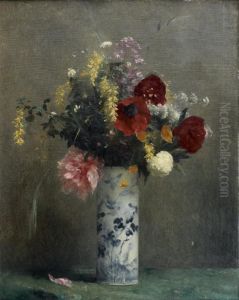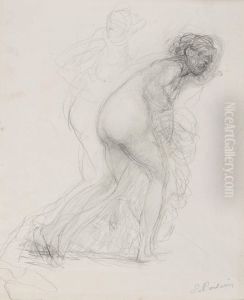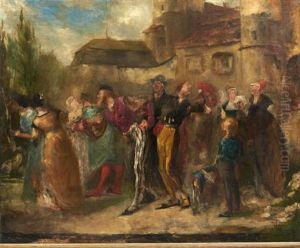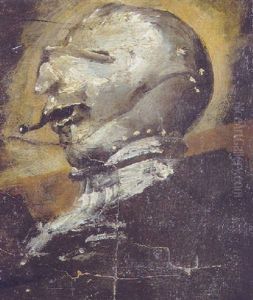Emile Boilvin Paintings
Émile Boilvin was a French artist and engraver born in 1845 in Besançon, France. He is most well-known for his work as an engraver, but he also practiced other forms of art, including painting and drawing. Boilvin studied at the École des Beaux-Arts in Paris, where he honed his artistic skills and became deeply immersed in the art movements of his time.
During his career, Boilvin became associated with the etching revival in France, a movement that sought to reinvigorate the art of etching as a creative medium rather than merely a reproductive one. His works often featured landscapes, portraits, and genre scenes. Boilvin displayed an adeptness at capturing the nuances of light and shadow, as well as the textures of the natural and built environments.
In addition to creating original works, Boilvin contributed to the field of printmaking by reproducing the works of other artists. This was a common practice among engravers of the time, as it allowed for the wider dissemination of artworks to the public. Boilvin's engravings were known for their precision and fidelity to the original works, which included pieces by notable artists of his era.
Boilvin exhibited his works at the Paris Salon, which was the official art exhibition of the Académie des Beaux-Arts in Paris. His participation in the Salon was a testament to his recognition and acceptance by the art establishment. He became a well-respected figure within the artistic community, contributing not only through his own creations but also through his collaborations with other artists.
Émile Boilvin's career was part of the larger context of the 19th-century French art scene, a period marked by transitions and the emergence of new art movements such as Impressionism. While Boilvin's style did not radically break from traditional techniques, his work reflected the high level of craftsmanship and the appreciation for detail characteristic of the era.
Boilvin passed away in 1899, leaving behind a body of work that continues to be appreciated for its technical skill and artistic beauty. His engravings, in particular, remain a testament to the importance of printmaking in the history of art and its role in the dissemination and preservation of artistic heritage.



